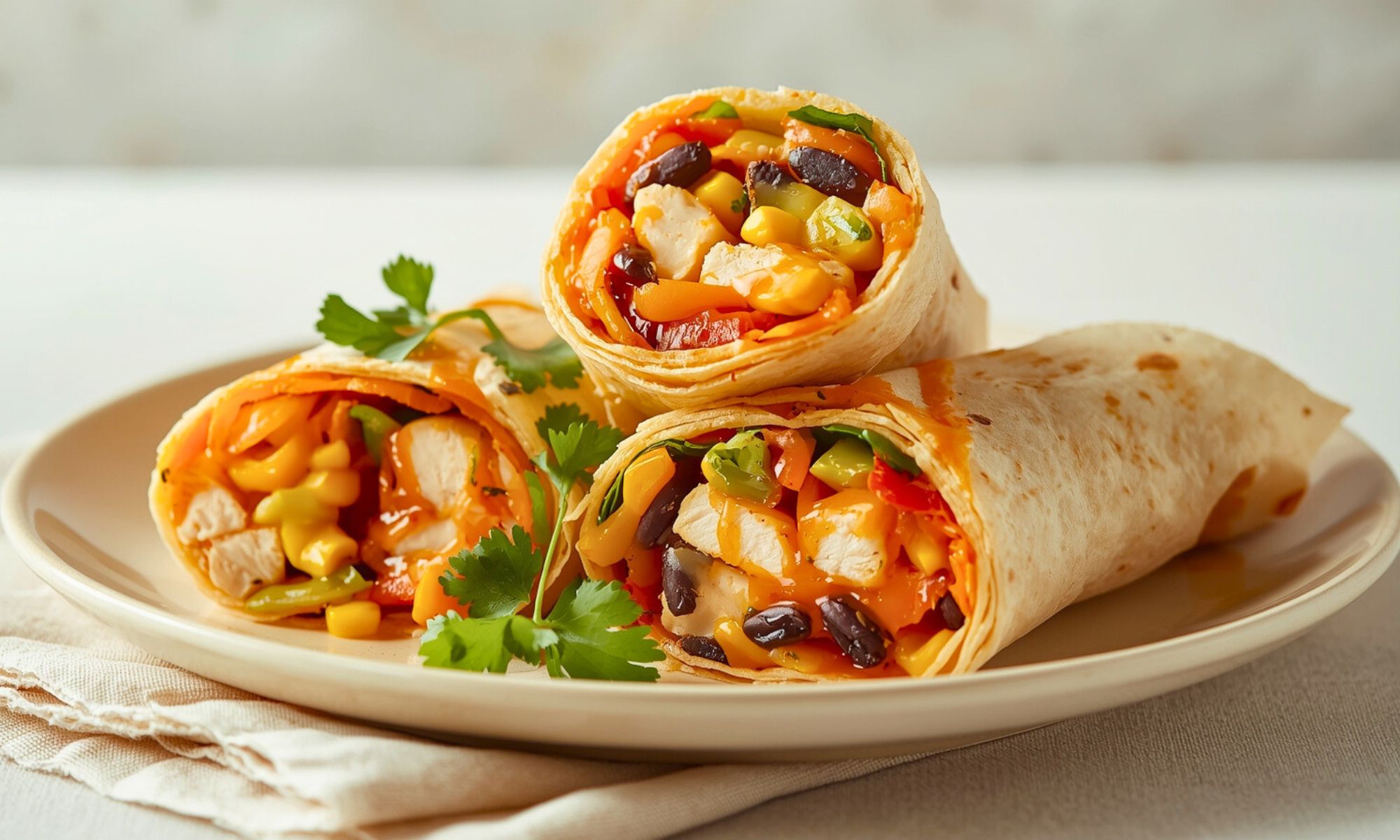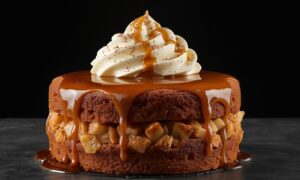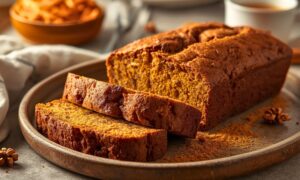My daughter texted me at noon last Friday. “Mom, I need lunch ideas. Fast ones.” I sent her my Southwest Chicken Wraps recipe. Twenty minutes later, she replied with a photo. Her kitchen counter covered in colorful ingredients. Her face beaming. “Why didn’t you tell me about this sooner?”
That’s the power of a really good wrap. Southwest Chicken Wraps aren’t just convenient. They’re genuinely exciting to eat. You get smoky, spicy, creamy, and crunchy all in one bite. It’s like a fiesta wrapped in a tortilla. And it takes less time than waiting in a drive through.
Here’s why this recipe changed my meal prep game. You can make components on Sunday. Assemble wraps throughout the week. Each one stays fresh. Each one tastes incredible. No soggy disasters. No boring lunches. Just flavor packed satisfaction.
The secret is in the layering technique. Order matters here. Put ingredients in the wrong sequence? You get a mess. Follow my method? You get perfection. We’ll talk about that later.
These wraps work for every situation imaginable. Pack them for work. Make them for dinner. Serve them at parties. Feed them to picky teenagers. Everyone finds something to love. The flavors are bold but not aggressive. Satisfying but not heavy.
Modern life demands recipes that multitask. Southwest Chicken Wraps deliver on every front. They’re healthy without being boring. Quick without being processed. Customizable without being complicated. That’s the trifecta we’re all chasing.
Why Southwest Chicken Wraps Deserve Your Attention
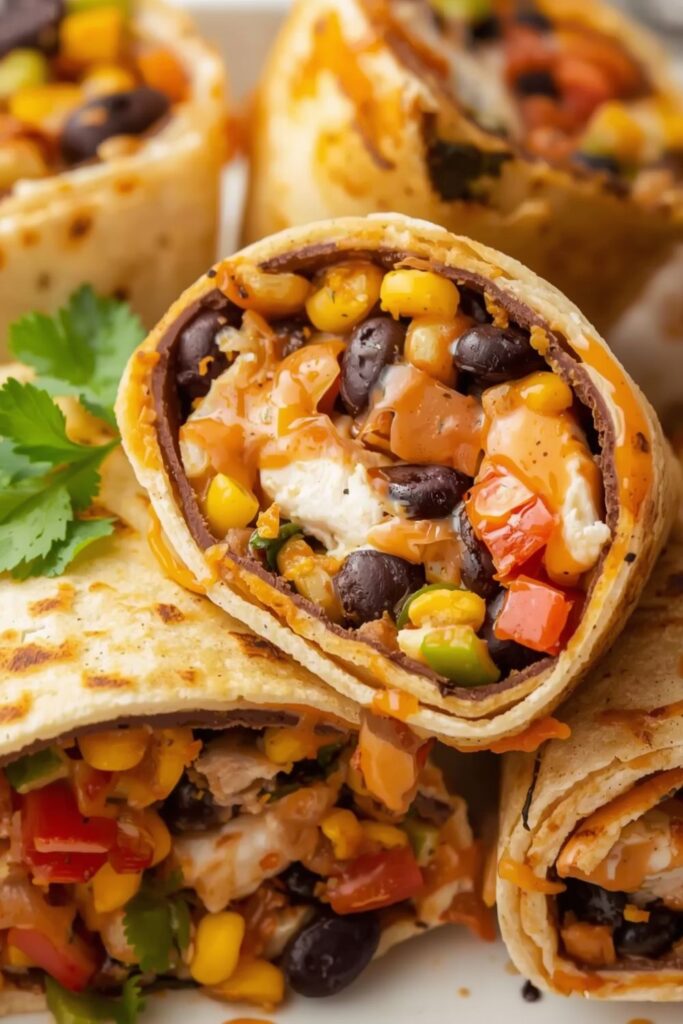
Southwest cuisine is pure genius when you think about it. It takes Mexican boldness and American practicality. Then it adds ingredients that just work together. Corn, beans, peppers, lime, cilantro. These flavors were meant to be friends.
The wrap format makes everything better. You can eat it with one hand. You can take it anywhere. No fork required. No plate needed. Just grab and go. That’s revolutionary for busy people.
What makes these wraps special is the temperature play. Cool crisp lettuce meets warm seasoned chicken. Cold sour cream contrasts with spicy salsa. Your mouth experiences different sensations with every bite. That’s what keeps you interested.
The protein to carb ratio is surprisingly balanced here. You’re not just eating bread with a tiny amount of filling. The chicken is substantial. The vegetables add volume. The tortilla is just a vehicle. A delicious, necessary vehicle.
I’ve been making these for five years now. They’ve evolved with my taste and schedule. Started simple. Got more refined. Now they’re exactly where they need to be. Perfect for beginners. Impressive enough for company.
Ingredients & Smart Swaps
Let me walk you through what you’ll need. I’m organizing this by component. Makes shopping easier.
The Protein Base
- 1.5 pounds boneless, skinless chicken breasts
- 2 tablespoons olive oil
- 2 teaspoons chili powder
- 1 teaspoon cumin
- 1 teaspoon smoked paprika
- ½ teaspoon garlic powder
- ½ teaspoon onion powder
- Salt and pepper to taste
The Fresh Elements
- 4 large flour tortillas (10 inch)
- 2 cups romaine lettuce, shredded
- 1 cup cherry tomatoes, halved
- 1 cup corn kernels (fresh, frozen, or canned)
- 1 cup black beans, drained and rinsed
- 1 avocado, sliced
- ½ cup red onion, thinly sliced
- ½ cup cilantro, chopped
The Flavor Boosters
- ¾ cup shredded cheddar or Mexican blend cheese
- ½ cup sour cream
- ⅓ cup salsa (your preferred heat level)
- 2 tablespoons lime juice
- 1 jalapeño, diced (optional)
Now let’s talk about intelligent substitutions.
Chicken alternatives? Turkey breast works beautifully. Grilled shrimp is fantastic. For vegetarians, try seasoned cauliflower. Even firm tofu absorbs these spices well.
Tortilla options matter more than you’d think. Flour tortillas are classic and pliable. Whole wheat adds fiber and nuttiness. Spinach or tomato tortillas bring color. Low carb wraps work for keto folks. Just make sure they’re large enough. Small tortillas can’t hold everything.
Cheese swaps are endless. Pepper jack adds heat. Monterey Jack is mild and creamy. Cotija brings authentic Mexican flavor. Feta works if you’re feeling adventurous. Skip it entirely for dairy free versions.
No black beans? Pinto beans are traditional Southwest. Kidney beans work too. Even chickpeas bring protein and texture. Refried beans create a spread that helps hold things together.
The corn question. Fresh corn tastes sweeter. Frozen is convenient and year round. Canned works but drain it well. Roasted corn adds smoky depth. I char mine when I have five extra minutes.
Here’s what most people don’t know about chicken breast. Pounding it to even thickness matters. Thin spots overcook. Thick spots stay raw. Use a meat mallet. Or a heavy pan. Just get it uniform.
Buy pre shredded lettuce if time is tight. But whole romaine stays crispier longer. Your choice depends on your priorities. Convenience versus optimal texture.
The Cooking Process: Building Flavor Layers
Start by seasoning your chicken properly. Mix all your spices in a small bowl. This ensures even distribution. Rub the mixture all over the chicken. Get into every surface. Don’t be shy.
Let that seasoned chicken sit for ten minutes. Room temperature is fine. The salt draws moisture to the surface. That moisture dissolves the spices. Then it gets reabsorbed. You get deeper seasoning throughout.
Heat your largest skillet over medium high heat. Add your oil. Let it shimmer. Now lay your chicken breasts in. Don’t move them for four minutes. I know it’s hard. But movement prevents browning.
After four minutes, flip the chicken. Cook another four to six minutes depending on thickness. Total cooking time runs eight to ten minutes. You want an internal temperature of 165°F. Use a thermometer. Guessing leads to dry chicken.
Remove chicken to a cutting board. Let it rest for five minutes. This is not optional. Cutting too early releases all the juices. They run onto the board instead of staying in the meat.
While chicken rests, char your corn if using frozen. High heat. Two minutes. You want golden spots. This adds depth that raw corn can’t provide.
Slice your chicken against the grain. Thin slices are easier to wrap. They also distribute better throughout the tortilla. Thick chunks create bulges and uneven bites.
Assembly: The Art of the Perfect Wrap
Warm your tortillas first. Thirty seconds in a dry skillet per side. Or wrap them in damp paper towels. Microwave for twenty seconds. Warm tortillas are pliable. Cold tortillas crack.
Lay your tortilla flat on a clean surface. Imagine a horizontal line through the center. You’ll build your filling just below that line. This positioning is crucial for proper rolling.
Start with a thin layer of sour cream. Spread it in a rectangle. Leave two inches on each side. This acts as moisture barrier and flavor base.
Add your lettuce next. This creates a crisp buffer. It prevents other ingredients from making the tortilla soggy. Pile it in the center of your sour cream rectangle.
Now layer your chicken slices. Overlap them slightly. You want even distribution from end to end. No gaps. No piles.
Scatter your corn, black beans, and tomatoes over the chicken. Don’t dump them all in one spot. Spread them out. You want every bite to have everything.
Add your cheese now while the chicken is still slightly warm. It’ll soften just a bit. Not melt completely. Just soften. That’s the sweet spot.
Drizzle salsa over everything. Not too much. Two tablespoons max. Too much salsa equals soggy wrap later. You can always dip.
Add avocado slices, red onion, and cilantro. These go on last. They’re delicate. They bruise easily. Handle them gently.
Here comes the folding technique that changes everything. Fold the left and right sides in. They should cover about two inches of filling. Now fold the bottom up and over. Roll tightly forward. Keep tension as you roll. Tight wraps don’t fall apart.
Common Mistakes and How to Dodge Them
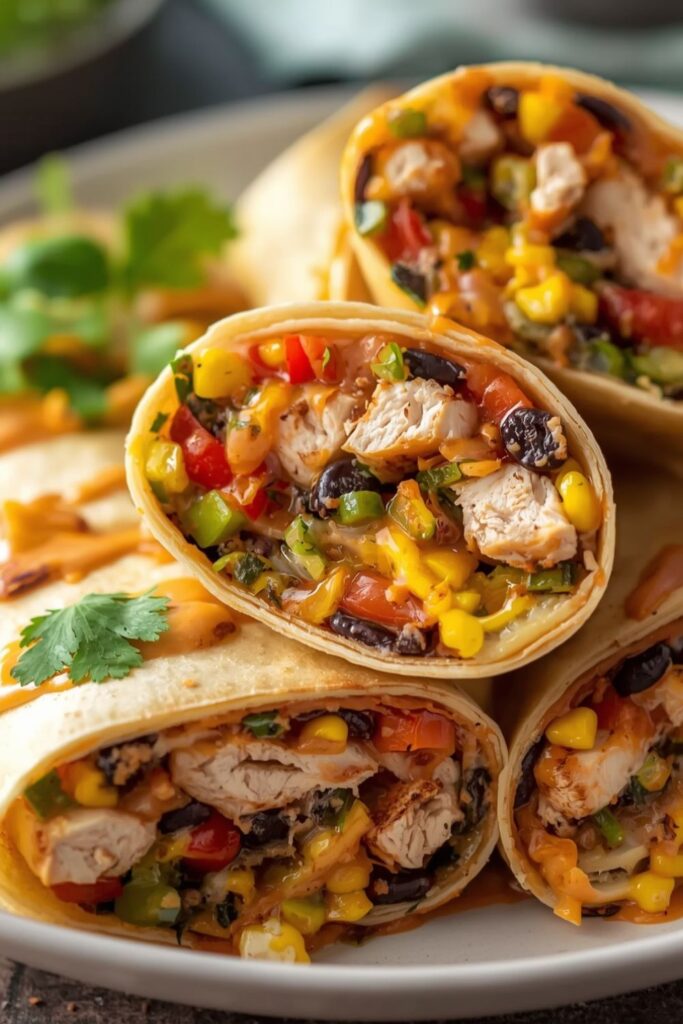
The biggest mistake? Overfilling the tortilla. More is not better. It’s messy. Use the amounts I specified. Trust the process.
Another common error: not warming the tortilla. Cold tortillas crack when you roll them. Then all your beautiful filling falls out. Thirty seconds of warming prevents this disaster.
Some people skip the resting period for chicken. They cut it immediately. All the juices run out. You get dry meat and a soggy wrap. Wait the full five minutes.
Using wet ingredients directly against the tortilla creates sogginess. That sour cream barrier isn’t decorative. It’s functional. It protects the tortilla from moisture.
Rolling too loosely makes wraps fall apart. You need tension as you roll. Press down slightly. Keep things compact. A tight wrap is a happy wrap.
Slicing the wrap too early is another pitfall. Wait two minutes before cutting. This lets everything settle. The ingredients meld slightly. The structure stabilizes.
Variations That Keep Things Exciting
Once you’ve mastered the basic Southwest Chicken Wraps, experimentation becomes fun. Here are my favorite twists.
Buffalo Southwest fusion: Toss your cooked chicken in buffalo sauce. Add blue cheese crumbles instead of cheddar. Include ranch instead of sour cream. Spicy and tangy collide beautifully.
BBQ Southwest style: Use BBQ seasoned chicken. Add crispy fried onions. Swap salsa for BBQ sauce. Coleslaw instead of lettuce. Sweet and smoky prevails.
Mediterranean Southwest mashup: Here’s a fun global twist. Use tzatziki instead of sour cream. Add feta, cucumbers, and olives. Keep the Southwest spices on chicken. East meets West in surprising harmony.
Breakfast wrap version: Scramble eggs with the Southwest spices. Add breakfast sausage. Include hash browns. Everything else stays the same. Morning game changer.
Loaded fajita wraps: Add sautéed bell peppers and onions. Use fajita seasoning on chicken. Extra jalapeños for heat lovers. More vegetables, more color.
Crispy wrap upgrade: After assembling, grill the entire wrap. Two minutes per side in a panini press. Or in a dry skillet. The tortilla gets crispy. The cheese melts completely. The experience elevates dramatically.
The Science Behind Perfect Southwest Chicken Wraps
Let’s talk about what makes these Southwest Chicken Wraps so satisfying. It’s not just random ingredients thrown together. There’s real method to this madness.
The spice combination triggers endorphin release. That’s why spicy food makes you happy. Cumin adds that earthy warmth while aiding digestion. That’s why it pairs so well with beans.
Smoked paprika brings grilled flavor without the grill. The lime juice brightens everything and prevents avocado browning. One ingredient doing multiple jobs.
Layering ingredients in specific order protects your tortilla. The sour cream creates a fat barrier. Fat repels water. This keeps everything crisp longer.
The temperature contrast between warm chicken and cold vegetables makes each bite interesting. Your taste buds experience different sensations. That’s complexity without extra effort.
Now that you know why this recipe works, let’s make sure you’ve got the right tools to make it effortless.
Tools That Make Life Easier
You don’t need much equipment for Southwest Chicken Wraps. But certain tools make the process smoother.
A meat thermometer eliminates guessing. Chicken cooked to exactly 165°F is perfectly done. Not dry. Not raw. Just right. This tool pays for itself in saved dinners.
A sharp knife matters for slicing chicken. Dull knives tear meat. Sharp knives slice cleanly. The texture difference is noticeable.
A good cutting board protects your counters. It also gives you workspace. Get one large enough to hold a whole chicken breast. Small boards are frustrating.
Heavy bottomed skillets distribute heat evenly. Thin pans create hot spots. Hot spots burn food. Good pans brown food. Big difference.
A meat mallet helps pound chicken to even thickness. But a heavy skillet works too. Just place chicken between plastic wrap. Pound gently. Don’t pulverize it.
Serving and Pairing Suggestions
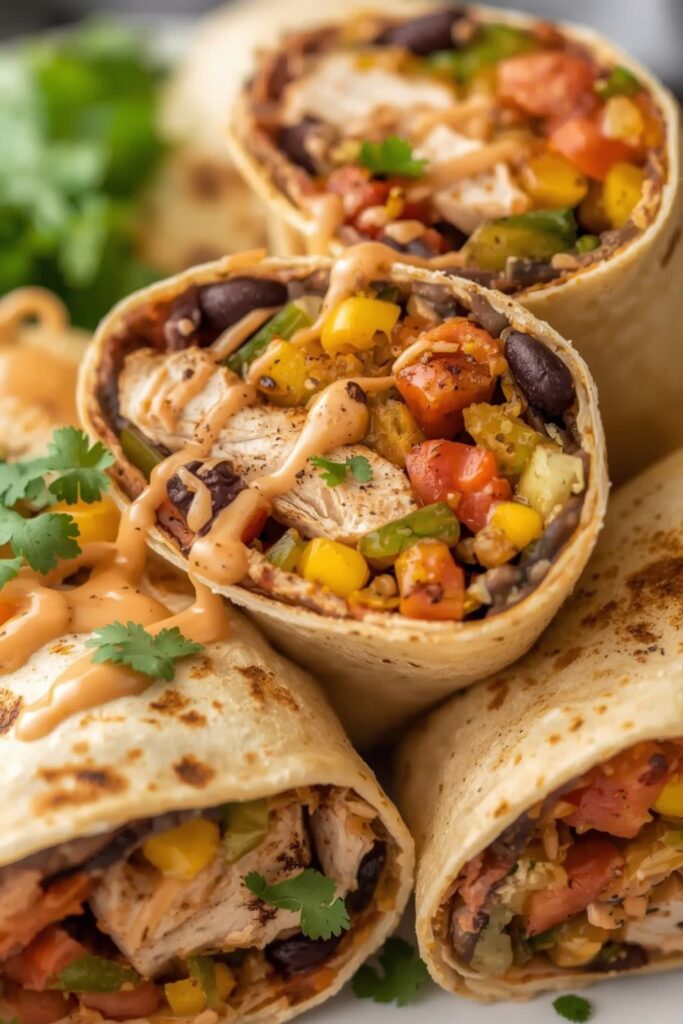
Southwest Chicken Wraps are incredibly versatile for serving. They work as main courses. They work as party food. Cut them in half diagonally. Suddenly they’re appetizers.
For sides, keep it light. These wraps are substantial. A simple salad works. So do tortilla chips with guacamole. Sweet potato fries are surprisingly good. Mexican street corn salad echoes the flavors.
Drink pairings should be refreshing. Mexican beer is classic. Corona with lime. Modelo. Pacifico. The crisp bubbles cut through richness. Iced tea works beautifully. Limeade is perfect. Even sparkling water with lime wedges.
For wine drinkers, go light and crisp. Sauvignon blanc handles the acidity well. A light Pinot Grigio works. Avoid heavy wines. They fight with the spices.
Margaritas are obviously appropriate. Make them with fresh lime juice. Salt the rim. Keep them on the rocks. Frozen margaritas work too if that’s your style.
For meal prep, wrap each one tightly in plastic wrap. Then in foil. They stay fresh in the fridge for three days. The foil prevents the tortilla from drying out.
To serve at parties, arrange them on a platter. Cut side up. Garnish with cilantro sprigs. Lime wedges around the edges. Looks impressive. Tastes even better.
Bringing It All Together
Southwest Chicken Wraps prove that quick cooking doesn’t mean boring food. Bold flavors. Fresh ingredients. Smart techniques. That’s the foundation of great weeknight meals.
The real win is the flexibility built into this recipe. Adjust spice levels. Swap proteins. Change up vegetables. Every version works because the framework is solid.
Remember the essentials: season generously, rest your chicken, layer strategically, roll tightly. Master these basics and you’ll make perfect wraps every time.
Stock your kitchen with the core ingredients. Then dinner is always thirty minutes away. That eliminates stress and decision fatigue on busy nights.
Make these Southwest Chicken Wraps your own. Adjust them to your taste. Share them with people you love. That’s when recipes become more than instructions. They become traditions.
Frequently Asked Questions
Before you dive in, here are answers to the most common Southwest Chicken Wrap questions.
Can I Make Southwest Chicken Wraps Ahead of Time?
Yes, but with strategic assembly. Cook your chicken up to three days ahead. Store it separately from other ingredients. Chop vegetables the night before. Keep everything in separate containers. Assemble wraps the morning you’ll eat them. Or assemble the night before if eating within twelve hours. The key is keeping wet ingredients away from the tortilla until the last possible moment. Some people wrap components separately. They assemble at lunchtime. Takes two minutes. Stays perfectly fresh.
What’s the best way to keep wraps from getting soggy?
The sour cream barrier is your first line of defense. It creates a moisture shield. Also, drain canned beans and corn thoroughly. Pat fresh vegetables dry after washing. Don’t use watery salsa. Thick, chunky salsa works better. Some people lightly toast their tortilla after assembling. This creates a slight barrier on the outside. If packing for lunch, wrap tightly in foil. This prevents moisture migration. Store salsa separately if possible. Add it right before eating.
Can I use rotisserie chicken to save time?
Absolutely, and it’s actually delicious. Rotisserie chicken is already seasoned. Just add Southwest spices to taste. Shred or dice it. Mix with a tablespoon of olive oil and your spice blend. Heat it quickly in a skillet. This refreshes the flavor. Makes it cohesive with other ingredients. You’ve just cut cooking time in half. This is meal prep genius. Keep rotisserie chicken on hand. Dinner becomes effortless.
How do I prevent my wrap from falling apart when eating?
Tight rolling is crucial. Use enough tension. Press down as you roll. The wrap should feel compact. Also, don’t overfill. Less is more here. Cut the wrap diagonally before eating. This creates two smaller pieces. Easier to manage. Some people eat wraps with a fork initially. They eat from the cut end. The final bites are fork free. You can also use a smaller tortilla. Less surface area to manage. Just reduce filling proportionally.
Are Southwest Chicken Wraps healthy?
They can be very nutritious. You’re getting lean protein from chicken. Fiber from beans and vegetables. Healthy fats from avocado. Complex carbs from the tortilla. To make them lighter, use whole wheat tortillas. Reduce cheese. Use Greek yogurt instead of sour cream. Load up on vegetables. Go easy on high calorie add ins. One wrap with smart choices runs about 400-500 calories. That’s reasonable for a complete meal. Plus you’re getting vitamins, minerals, and satisfaction.

Swiftly Captions by Tina Smith — Quick, flavorful food recipes made simple, bringing fresh inspiration to your kitchen every day
